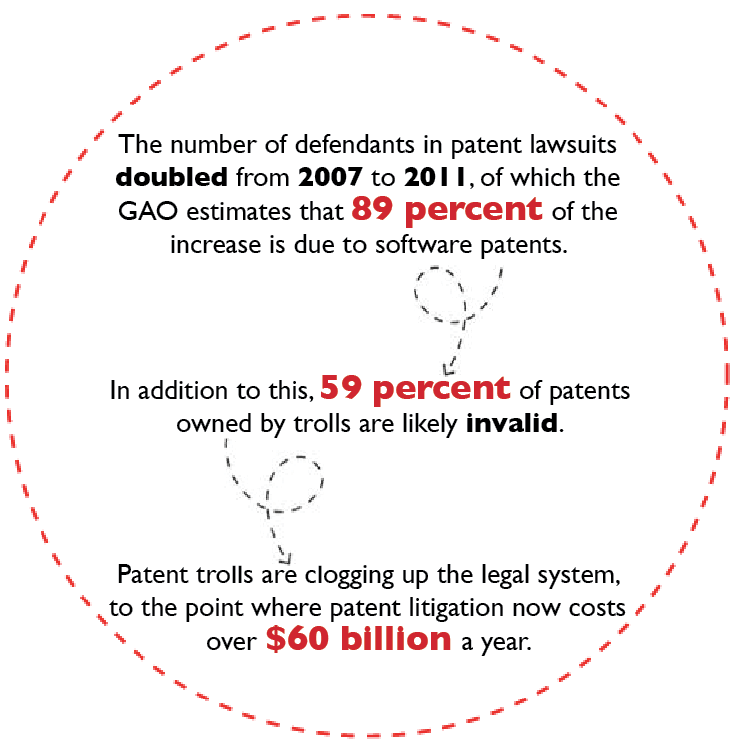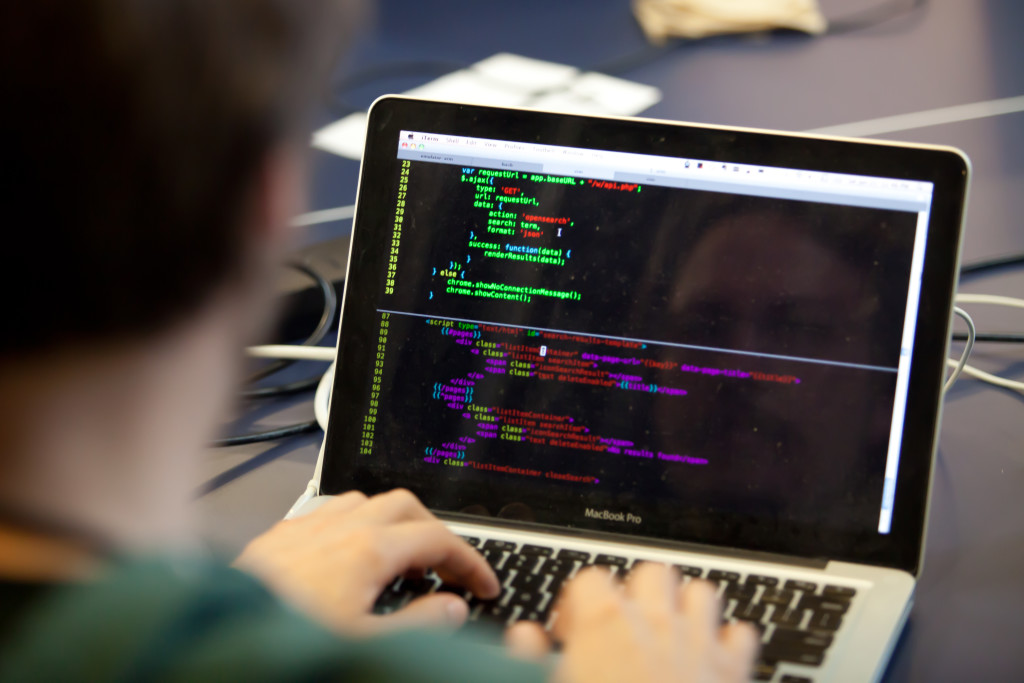In June, the Supreme Court ruled that a group of banking-related software patents were invalid. The ruling was received with as much excitement as its bland description suggests. The case in question was between two banking institutions, Alice Corporation and CLS Bank. Alice argued that CLS had violated a series of software patents it held, these patents covered the concept of using software to transfer money by placing it in the custody of an intermediate third party, otherwise know as “in escrow.” In its ruling the Supreme Court determined that this concept, escrow, was a common practice in banking and that simply doing it through a computer was not enough to warrant a patent. This decision was a striking reversal for the Supreme Court, whose decisions regarding software patents have, for years, been noninterventionist. However, software patents are fraught with endemic problems that encompass both the patent office and the judicial system.
While there is no standard legal definition of software patents, they are generally understood to protect the exclusive rights of companies over software inventions. This loose definition has led to a debate of what counts as a “new invention,” rather than the mere use of a computer to perform an existing task. In fact, until just recently, the very idea of software patents was largely disregarded. Throughout the 1970s, the Supreme Court rejected numerous applications for software patents, arguing that it would be no different than patenting a mathematical equation, something the Court had already decided could not be patented. Then, in 1981, the Supreme Court broke tradition by allowing a patent to be issued for a machine that used computer software to determine the moment when rubber had cured. Beginning in the 1990s, the United States Court of Appeals for the Federal Circuit — created by Congress in 1982 and given authority over all patent cases — broadened the scope of what could be patented even further in a series of cases using the precedent set by the 1981 Supreme Court decision. While the courts still maintain that mathematical equations cannot be patented, they do allow processes that use a computer, and thus use mathematical equations, to be patented. This contradiction of sorts allows the Court’s current stance to be vague enough so as to be interpreted in countless ways. The ambiguity of software patent law clogs up our legal system, stifles innovation and further consolidates power in the tech industry into the hands of a few large corporations.
Patent trolls — companies that don’t make any product and whose sole source of money is litigation — have skyrocketed since the advent of software patents.
Some of the software concepts owned by companies today seem patently ridiculous. For instance, a 1999 patent by Amazon owns the concept of “one-click” purchasing. A 2012 patent grants Apple the design rights to round-cornered rectangles. These patents can be very broad; another patent held by Apple describes a right over “displaying electronic lists and documents” on a mobile device. The list goes on and on; our legal system is flooded with vague, unnecessary software patents.
Software patents are inherently different from other kinds of patents. With machine patents working models are used to determine whether a machine represents infringement: If the machine in question works differently than the patented model, then the machine is in violation. The same goes for chemical patents. But software is different. With software patents the concept by itself is enough to warrant a patent, making it much easier to violate a software patent. All it takes are a few similar lines of code among thousands
The problem starts with the inefficiency of the patenting process. In 2013, the United State Patent and Trademark Office had 8,000 officers who processed roughly 600,000 patents. Especially in a field as prone to fast-paced innovation as software, patent officers don’t always have the expertise necessary to decide whether complicated, vague patents should be granted. However, even with a perfectly efficient patent office extremely vague, low-quality software patents would still be granted, because the root of the problem lies in the basic rules currently applied to software patents in the legal system. And as long as unspecific, low-quality software patents are continuously granted they will continue to jam the legal system.
As much as three-quarters of patent lawsuits are related to software, but most of these lawsuits aren’t filed by companies like Apple. Patent trolls, companies that don’t make any product and whose sole source of money is litigation, have skyrocketed since the advent of software patents. Patents on software are shown to be more likely to lead to litigation than other types of patents, and according to the Government Accountability Office (GAO), patent trolls use software patents in 93 percent of their cases. The number of defendants in patent lawsuits doubled from 2007 to 2011 — the GAO estimates that 89 percent of the increase is due to software patents. In addition, 59 percent of patents owned by trolls are likely invalid anyway. Patent trolls feeding off of software patents, are clogging up the legal system to the point where patent litigation now costs over $60 billion a year. Furthermore, because patent trolls don’t make any product of their own, they have no risk of being counter-sued. One solution is to treat software like music or other media. Musicians aren’t able to patent a specific method of recording, but they are able to copyright their songs to the point where if another song is similar enough, it is in violation of the copyright. Copyrights have clearer boundaries, because they protect the specific expression of an idea, rather than the idea itself. Under copyright, companies can only protect the code they use to perform a task, not the process itself. Copyrights are also cheaper to obtain, making them more accessible to small businesses. Software can already be copyrighted, but the widespread use of patents has rendered software copyrights ineffective.

Plus, switching to copyright would open up opportunities for small businesses. Currently, in order to innovate companies need expensive legal teams for fear of being sued for violating a software patent that might conceivably apply. This hurts the economy — most patent lawsuits are filed against small companies without the financial or legal means to defend themselves from huge patent trolls. As a result, small companies are reducing their venture capital investments and spending less on research and development.
The effects software patents have on consumers are substantial. Because the patent holder is the only one that can improve a patented software or technology, software patents reduce the sharing of ideas in the tech industry. The end result is software that isn’t as good as it could be, and is often overpriced in order to recoup the exorbitant legal fees companies must now pay to protect their inventions. In a world in which the Internet is the engine of collaboration, easy digital access to algorithms behind software only stands to make the situation more fraught.
Recent developments give some hope for the future of software patents. The US Patent Office, in response to the recent Supreme Court ruling, has been issuing fewer software patents. By limiting the scope of what counts as patentable software, the Court is attacking the heart of the problem, which lies in the excessive amount of low-quality patents. By increasing the judicial scrutiny on software patents, perhaps CLS Bank v. Alice will be a landmark decision, finally ending the stranglehold low-quality software patents have on the judiciary system and innovation in the tech industry.

